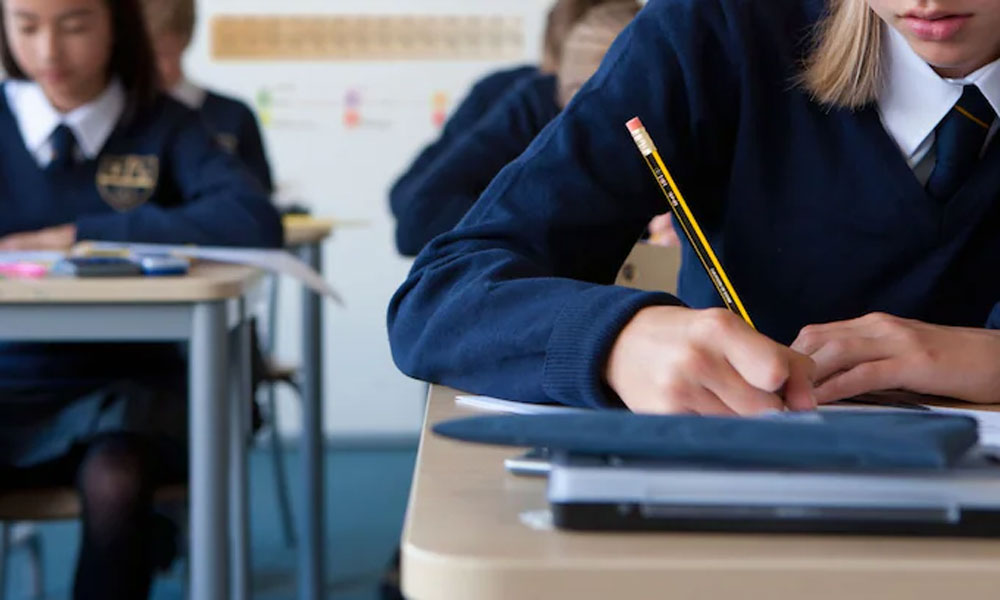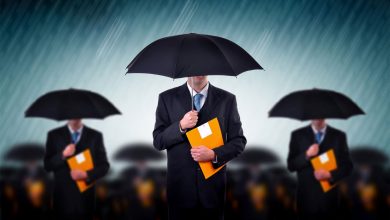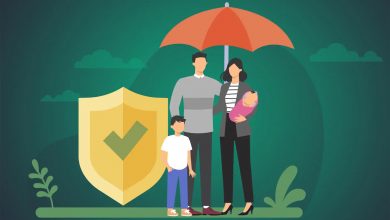Private School vs. Public School – Cost & Comparison

School prices for youngsters are one of the important bills for a lot of middle-class households. Some parents pay 1000’s of {dollars} every year to ship their children to non-public schools, whereas others spend 1000’s in mortgage prices to purchase properties in top-rated faculty districts.
A 2016 Brookings Institution evaluation of 2010 and 2011 information discovered that housing close to high-scoring public schools price a mean of $11,000 extra per year than properties close to low-scoring schools.
For parents who need the absolute best training for his or her youngsters, the selection between private faculty and public faculty is a tough one. Both have their prices, however which is definitely larger? And whenever you examine the advantages of private and public schools, are they sufficient to justify the prices?
Costs and Benefits of Private School
According to figures from the National Center for Education Statistics (NCES), there have been 34,600 private elementary and secondary schools within the United States within the fall of 2015. About 5.8 million American youngsters had been enrolled in private schools that year — roughly 11% of all schoolchildren within the nation.
The major distinction between private schools and public schools is that non-public schools don’t obtain any funding from the federal government. That’s why they need to cost tuition. However, inside this broad class, there are lots of several types of schools that fluctuate extensively of their prices and the training they supply.
Types of Private Schools
When you’re weighing the prices and advantages of private faculty, know that the kind of faculty you select considerably impacts your choice. There are many various sorts of private schools, they usually differ tremendously of their price and strategy to training.
For-Profit vs. Nonprofit
All private schools cost charges, however just some are for-profit companies. Some are nonprofits run by non secular organisations or private foundations. A nonprofit faculty is prone to have decrease charges than a for-profit one.
Religious vs. Secular
According to the NCES, two-thirds of all private schools within the nation are non secular schools. About 20% are Catholic schools, 12% are conservative Christian schools, 9% are affiliated with one other faith, and 26% are unaffiliated. In 2015, greater than 75% of all private faculty college students had been in non secular schools.
Religious schools fall into two classes. Some are true private schools, which get their funding from tuition charges. They present a spiritual training, however they aren’t a part of a church.
Others are parochial schools or parish schools. These are extensions of an area church and obtain funding from it. They nonetheless cost charges, however they’re prone to be decrease than the charges for different private schools.
Boarding Schools vs. Day Schools
Boarding schools present meals and lodging for his or her college students along with training. At some schools, college students stay on campus in the course of the week and go house on the weekends. At others, college students stay on campus all through the college year and go house just for holidays. Faculty, workers, and their households usually stay on campus as properly.
At day schools, youngsters go to highschool every morning and are available house within the afternoon, simply as they do in public schools. These schools are usually less expensive than boarding schools as a result of they don’t have all the additional prices of housing college students.
Speciality Schools
Some private schools give attention to offering a particular kind of instruction. For occasion, language immersion schools give attention to educating college students a language apart from English. Students take all or a few of their courses within the international language.
Other private schools cater to college students with completely different training necessities. These embrace college students with disabilities, college students on the autism spectrum, and college students with varied kinds of emotional and studying issues. Teachers and workers are skilled to deal with these college students’ specialised studying wants. That makes these schools dearer than most.
Other private schools take their title from their common strategy to training. For occasion, Montessori schools give attention to serving to youngsters discover and study in their very own approach at their very own tempo. Waldorf schools are nonprofit schools that incorporate the humanities into all topic areas.
Private School Costs
On common, the price of private faculty tuition is s $12,350 per baby, in keeping with EducationData.org. On prime of that, parents can anticipate to pay a mean of $3,700 for different prices, corresponding to technology, books, provides, discipline journeys, sports activities, and faculty uniforms. That brings the full to $16,050 per year.
That’s a big burden for a middle-class household. In 2019, the nationwide median family earnings within the U.S. was $68,703, in keeping with the U.S. Census Bureau. That implies that a household making the median earnings must spend about 23% of its take-home pay to ship only one baby to non-public faculty and 46% for 2 youngsters.
However, the price of tuition varies considerably throughout the U.S. In Massachusetts, the common price of private faculty tuition is $24,000 per year — about 27% of the state’s median household income. In Nebraska, it’s simply $2,800, lower than 4% of the median earnings. Thus, the affordability of private schools relies upon quite a bit on the place you reside.
The kind of faculty additionally makes a distinction. The common tuition price for a non-public day faculty is $16,000 per year. Five-day boarding schools price greater than twice as a lot at $33,140. And seven-day boarding schools price a whopping $37,590 per year.
The grade stage impacts the price too. The common tuition for private elementary schools is $7,630 per year in comparison with $16,040 for private excessive schools.
Finally, non secular affiliation is a big consider price. Catholic schools are usually less expensive than different private schools, costing simply $4,840 for elementary faculty and $11,240 for secondary faculty.
All these elements collectively add as much as appreciable variations in price. A household with a mean earnings would pay simply 7% of its earnings to ship a toddler to a Catholic elementary faculty however over 50% for a seven-day boarding faculty.
Private School Benefits
Although private schools are costly, parents have many causes for selecting to pay the price. Private schools can provide many advantages for college kids, together with:
Smaller Class Sizes for Younger Students
A small class permits academics to present extra consideration to every pupil. In 2017-18, the common class dimension in private elementary schools was 16.7 college students, in keeping with the NCES. By distinction, in public major schools, the average class size was 20.9 college students.
Lower Student-to-Teacher Ratio
Aside from class dimension, private schools additionally are likely to have fewer college students in whole for every trainer. According to the NCES, the common student-to-teacher ratio in private schools was 11.9 in 2015. For public schools, there have been a mean of 16.2 college students per trainer.
Safety
Private schools are sometimes safer environments than public ones. The NCES reviews that gangs are much less prone to be current in private schools than public ones. Private faculty college students are additionally much less prone to see hate-related graffiti in school, be known as by a hate-related title, or experience bullying.
Curriculum
State regulation sometimes requires public schools to offer a curriculum that meets state requirements. Private schools have extra freedom to experiment. In addition to non secular training, they’re extra prone to provide programs in topics like artwork or music.
Advanced Placement
Private excessive schools have a tendency to supply a extra complete choice of advanced-placement (AP) programs than public excessive schools. Private schools throughout the U.S. provide an average of 11 AP courses, whereas the common for all schools is eight AP courses.
Test Scores
According to a 2006 NCES report, private faculty college students do higher on common than public faculty college students in assessments of studying and math potential. However, that partly displays the truth that private faculty college students are likely to have wealthier, extra educated parents.
After adjusting for college kids’ backgrounds, the variations in check scores are smaller, and in some instances, they disappear totally. A 2018 research performed on the University of Virginia discovered that whenever you regulate for background, private faculty college students do no higher at age 15 than public faculty college students in or out of faculty.
College Preparation
There’s some proof that non-public schools do a greater job getting ready college students for faculty than public ones. The League of Christian Schools reviews that college students in each private and parochial schools do considerably higher on the SAT than public faculty college students. But that will additionally mirror variations in social class.
Costs and Benefits of Public School
The overwhelming majority of U.S. youngsters are enrolled in public schools. According to the NCES, public faculty enrolment in 2016 totaled 47.3 million, 94% of all college students.
Like private schools, public schools differ extensively throughout the U.S. Since public schools get most of their funding from native property taxes, the most effective schools are usually in costly areas. These schools can afford to spend more on the most effective academics, tools, and actions. Students in wealthier schools are likely to get higher grades and do better on tests.
Types of Public Schools
According to the NCES, 93% of America’s public schools are conventional public schools, which get their funding from tax {dollars}. Their academics should meet state licensing requirements, and their curricula are additionally regulated.
In most areas, college students are assigned to an area public faculty based mostly on the place they stay. But some cities, corresponding to Boston, permit parents to decide on amongst a number of close by schools for his or her children.
About 7% of public schools are constitution schools. These schools nonetheless get their funding from tax {dollars}, however they function outdoors the native public faculty system. That offers them extra flexibility in selecting their curriculum. Many constitution schools give attention to a particular kind of training, corresponding to science or the humanities.
Charter schools are on the rise, in keeping with the NCES. The variety of constitution schools within the nation rose from round 2,000 in 2001 to round 7,000 in 2016. The variety of college students attending them rose from 400,000 to three million.
Many parents select constitution schools for his or her children as a result of they assume they provide a greater training than the native public faculty. But that’s not the case on common. The common student-teacher ratio in constitution schools is 17.8, in comparison with 16.1 in conventional public schools. And scores on reading and math tests for the 2 kinds of schools are practically an identical.
Some areas even have magnet schools. Like constitution schools, they sometimes give attention to a particular topic space, corresponding to science, the humanities, or language.
But not like constitution schools, magnet schools are a part of the college system. They’re run by a college district or a bunch of districts and are open to all college students in that district, regardless of the place they stay. There are 4,340 magnet schools within the nation educating over 3.5 million college students, in keeping with Magnet Schools of America.
Public School Costs
Although public schools don’t cost tuition, that doesn’t imply they’re cost-free. Parents are answerable for the price of their children’ faculty provides, which these days means not simply notebooks and pencils but additionally a house computer and printer. Students can also want provides for extracurricular actions, corresponding to sports activities uniforms or musical devices.
But all these are prices private faculty parents should additionally pay. The most important price of sending your children to a public faculty is the property taxes you pay to help the college system, although private faculty parents pay these too, as do these with no youngsters. And even for those who lease moderately than private a house, you continue to pay property taxes not directly. The property owner pays them and folds that price into the lease quantity.
Of course, it’s important to stay someplace, and you need to pay property taxes regardless of the place that’s. But good faculty districts often have way more costly properties. Living in a single means you pay extra for each property taxes and all the prices of homeownership.
To work out the price of an excellent public faculty, you need to examine the price of the neighbourhoods related to that college with the price of close by neighbourhoods in different faculty districts. An glorious place to begin is with Niche, an internet site that charges and compares U.S. faculty districts based mostly on elements like check scores, commencement charges, well being and security scores, and opinions.
Each year, Niche lists the ten faculty districts it charges as the most effective in America. For 2021, the highest faculty district on the record is the Adlai E. Stevenson High School District No. 125 in Lincolnshire, Illinois. According to Trulia, the common house worth in that space is $513,369. With a 30-year fixed-rate mortgage at 2.89%, that works out to about $2,115 per 30 days.
In close by Buffalo Grove, Trulia says the everyday house worth is simply $339,497, or $1,420 per 30 days. That’s a distinction of $8,340 per year. The NCES places the common price of private faculty tuition in Illinois at solely $6,860, so for a household with one baby, private faculty is cheaper than a top-notch public faculty.
But for a household with two youngsters, the mathematics appears completely different. Living in Lincolnshire would price them solely $8,340 further per year, whereas private faculty for each children would price $13,720. That makes private faculty about 65% dearer.
Of course, that’s just one faculty district. The relative prices of private and non-private schools in your space could also be completely different. You can use Niche to search out the most effective schools in your space, then use information from Trulia to see how a lot it prices to stay in these faculty districts. Compare that to the price for close by districts, then examine the distinction to the price of private schools close to you.
Public School Benefits
If you could have two or extra children, residing close to an excellent public faculty is prone to price lower than paying for private faculty. But there are much more causes to decide on a public faculty on your children.
Smaller Classes for Older Students
While private elementary schools provide smaller class sizes than public schools, the reverse is true for center and excessive schools. In 2017-18, private secondary schools averaged 17.8 college students per class, in keeping with NCES information. But the NCES reveals the common class dimension was solely 16.6 in public center schools and 16.3 in public excessive schools.
More Qualified Teachers
Some parents select private schools as a result of they assume their youngsters will get a greater training there. But if you wish to guarantee your children have probably the most certified academics, it might make extra sense to decide on a public faculty.
According to the NCES, public schools sometimes pay their academics greater than private schools. That makes it simpler for public schools to draw probably the most certified academics.
NCES information present that public schools have fewer academics with lower than three years of experience than private schools. They even have fewer academics with out a school diploma and extra academics with graduate levels.
Diversity
For some parents, one perk of public schools is their range. According to NCES, 69% of private faculty college students are white as in comparison with solely half of public faculty college students. Charter schools are probably the most various of all, with 33% white college students, 32% Hispanic, 27% Black, and eight% of different races.
This larger range extends to the school as properly. The NCES reviews that solely 3% of private faculty academics are Black as in comparison with 7% of public faculty academics and 10% of academics in constitution schools. Similarly, solely 7% of private faculty academics are Hispanic as in comparison with 9% of academics in public schools and 16% in constitution schools.
This larger range presents clear advantages for minority college students. They’re prone to really feel extra at house and extra supported in an surroundings the place there are each college students and academics who seem like them. According to the Center for Black Educator Development, having no less than one Black trainer early on lowers a Black pupil’s probability of dropping out of faculty by 39%. And the National Coalition on School Diversity (NCSD) reviews that college students of colour carry out higher in various schools than segregated ones and white college students carry out equally properly.
But range has benefits for college kids of all races. According to the NCSD, attending a racially various faculty reduces prejudice and improves communication, vital considering, and problem-solving expertise.
Programs for Students With Disabilities
Children with disabilities, together with bodily, developmental, and studying disabilities, are sometimes higher off in public schools than private ones. Under the Individuals With Disabilities Education Act, public schools should present education schemes for college kids with disabilities and make use of academics skilled to work with these college students.
But private schools don’t have to offer for these college students. Some schools merely don’t admit college students who want sure particular studying lodging, and people who do often don’t present any particular education schemes.
A couple of private schools cater particularly to youngsters with disabilities, however these price much more than different private schools. According to Private School Review, tuition for private schools for youths with disabilities sometimes ranges from $50,000 to $68,000.
Extracurricular Activities
On common, public schools are usually greater than private schools. In 2015, the common private faculty had simply 166 college students, whereas the common public faculty had 526, in keeping with the NCES.
This bigger dimension offers public schools a bonus in the case of extracurricular actions like sports activities, theater, debate golf equipment, and group service packages. A small faculty, even one with plenty of resources, can’t help as many various packages as a result of it simply doesn’t have sufficient college students to participate in them.
In common, in case your baby is curious about a selected sport or exercise, a public faculty is extra prone to provide a membership or program to help it than a non-public faculty. The exception to this rule is private schools specialising in particular actions, corresponding to artwork or music.
Advanced Placement
Overall, private schools provide extra advanced-placement programs on common than private schools. But that’s solely a mean. Many private schools don’t provide AP programs in any respect. A 2017 report by the Center for Public Education says 70% of public excessive schools provide no less than one AP class in comparison with solely 51% of private excessive schools.
Moreover, private faculty college students who take AP courses don’t all the time carry out higher than their friends in public schools. For instance, the New Jersey Education Association reported in 2020 that public faculty college students in New Jersey obtained larger AP scores on common than private faculty college students and had been extra prone to rating excessive sufficient to qualify for faculty credit.
Final Word
When it comes to selecting between private and public schools, there’s no one-size-fits-all answer. Instead, it’s important to have a look at the small print of your scenario.
First, take into account the prices. Look at costs for private schools in your space in addition to housing prices in neighbourhoods with good public schools. Remember that the extra children you could have, the extra bang you’ll get on your buck with a house in an excellent public faculty district.
Then, take into consideration the advantages of each private and public schools. For occasion, in order for you a spiritual training on your children, solely a spiritual private faculty can present it. A private faculty can even present a decrease student-to-teacher ratio and smaller class sizes for youthful children.
But public schools provide the advantages of higher training for youths with disabilities, extra range, and a wider vary of extracurricular actions. Weigh the prices and advantages, and make the choice that’s finest for you and your children.
Also, you don’t have to stay with the identical kind of faculty for 12 years or extra. If your native elementary faculty is nice however the highschool isn’t, you’ll be able to ship your children to public faculty by grade six earlier than transferring them to a non-public faculty. That offers you the most effective of each worlds and saves you money on tuition as properly.












